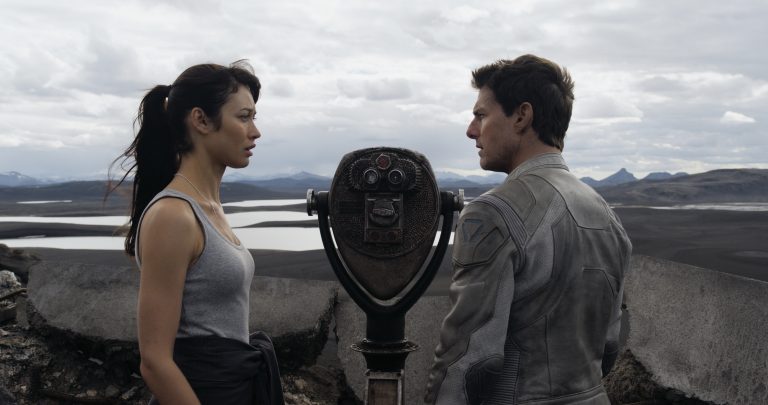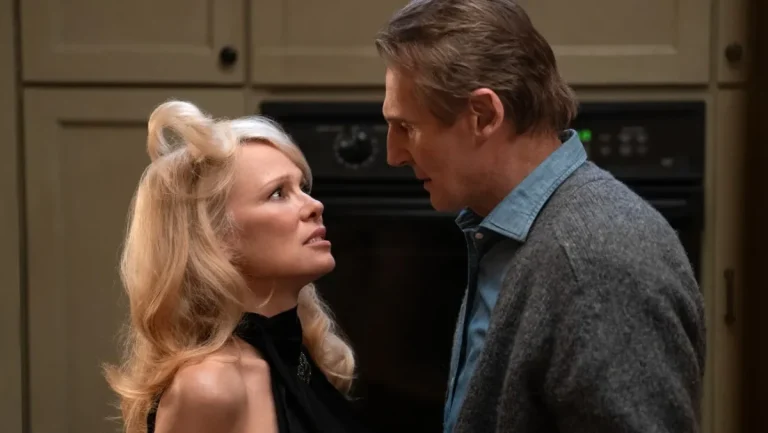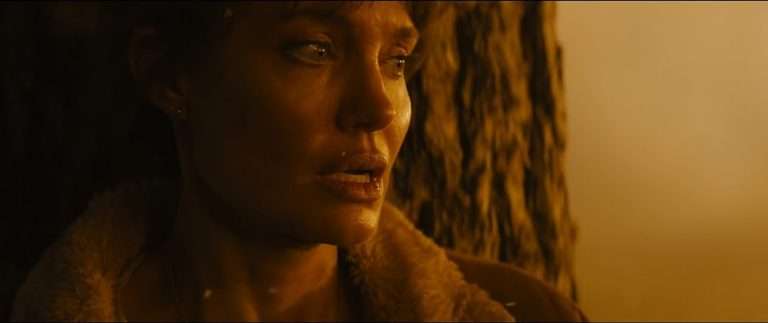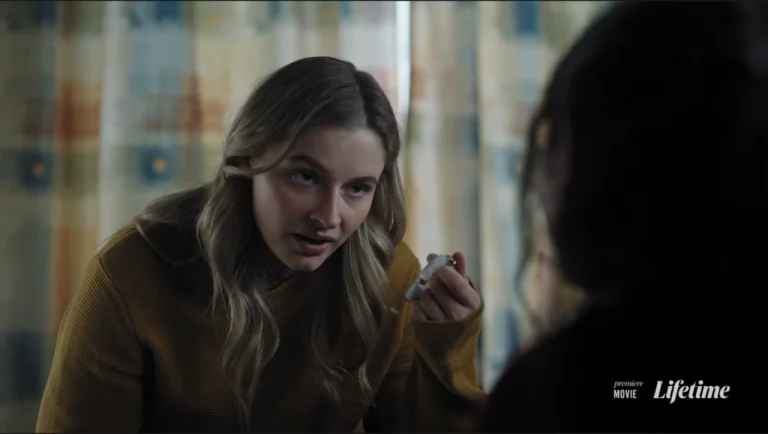Ned Crowley’s “Killing Faith” straddles a fine line between supernatural horror and a Western thriller, while leaning more on the latter’s genre elements. It follows three people walking across the American West, hoping to find a cure for something they can’t fully describe. They are part of mid-19th-century America, when the world was not as well-versed in scientific evolution as it was in perpetuating known myths and biases. It becomes a fuel for the film’s supernatural musings, where conventional beliefs clash with scientific temperament. It’s primarily why the central players in this story cross paths with each other.
The film begins by introducing one of them, Sarah (DeWanda Wise) — a single mother and a freed slave in 1849 Arizona territory. She lives in these desolate lands with her young daughter (Emily Katherine Ford), who puts her at odds with the world. The townsfolk are not biased against Sarah (at least on the surface) because of her ethnicity or because she has a fairer child than her. Instead, their bias stems from the young girl’s condition, as everything she touches dies. The film shows someone dying from the girl’s gentle touch. Yet, we see that happen only through Sarah’s perspective, whose situation in that town is far from ideal.
Sarah lives in a world consumed by the fear of plague. It leaves people to look out for themselves and unable to help others beyond the bare minimum. In their case, it doesn’t seem like a case of apathy but an act of self-preservation. Sarah lives among them as a black woman ostracized seemingly because of her child’s illness. The townsfolk do not want another reason to fear death at a time when death feels like an everyday reality. However, as a mother deeply concerned for her child’s safety, Sarah is ready to do anything to protect her.
Sarah can seek help from Bender (Guy Pearce), a local doctor who has a scientific temperament that no one else seems to possess. Instead, she seeks it from a faith-based figure, whom she deems better suited to help with the child’s apparent curse. Bender, although hesitant at first, joins her on a journey to find this spiritual cure, while holding on to his beliefs in science over dogma. The script raises that ideological clash by also introducing an indigenous outlaw (Raoul Max Trujillo), a preacher (Bill Pullman), and a mysterious family of three adults. It invites these characters as a means for Bender and Sarah to reflect upon their belief systems.
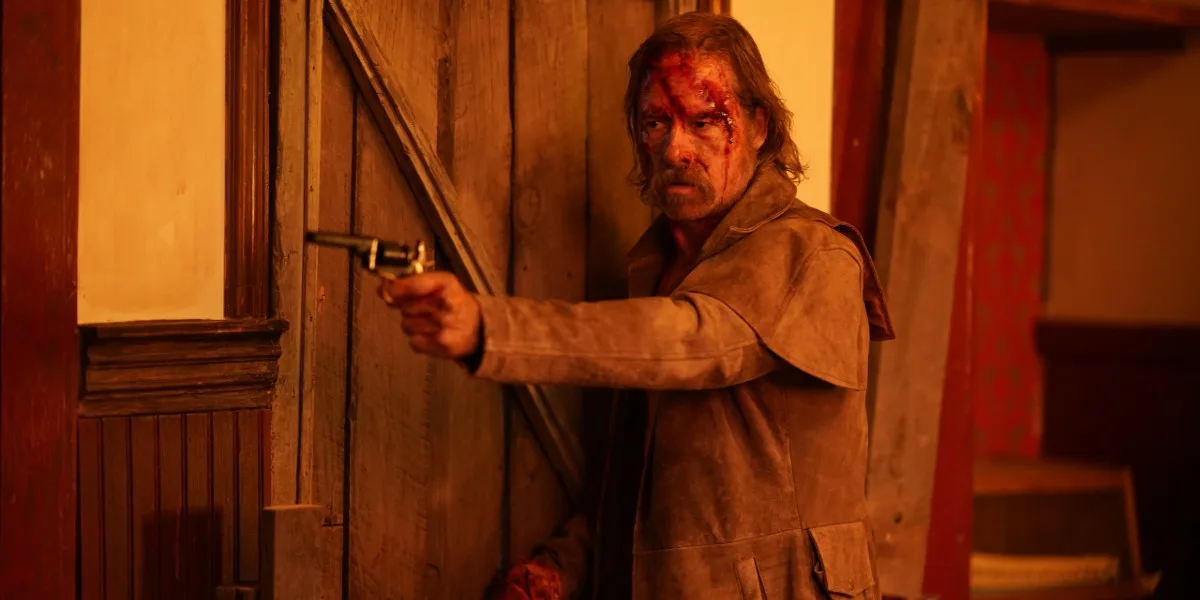
Also Read: The 15 Best Westerns of the 21st Century
Crowley presents Pearce and Wise’s characters as tragic figures trapped in a lawless world where trusting anyone can do more harm than good. That becomes central to their journey through deserts in scorching heat in hopes of protecting someone that the world deems unworthy of love or support. Despite those mounting concerns, they march on for their own reasons. Bender claims to have a purely material motive, but an underlying sentimental reason drives him to help Sarah. We see him as a widowed doctor haunted by loss and grief.
Throughout their journey, the film reveals how both their pasts shadow their lives, even when the world claims to have forgotten them. It shines when it addresses Bender’s trauma through glimpses of surrealist narration or casual conversations. It takes us further into understanding Bender’s emotional state underneath his stoic gruffness.
Justin Hamilton’s cinematography reveals beauty in the vast lands that the characters walk through, as expected in a classic Western. His work also helps with emotional beats when the characters experience love, desire, or intense grief. Pearce takes that emotionality further through the raw intensity of his performance, even in fleeting moments of human connection. He keeps his character grounded in this strange reality, which surprises him on almost every step.
As Bender, Pearce acts disoriented or annoyed without ever going overboard. His sheer passion for the craft turns Bender’s quest into a rewarding experience. Sadly, the film does not reach the same heights with its script or direction. The writing flirts with themes of mysticism and the supernatural, but never fully commits to them—even through characters who might have offered that perspective—leaving the moral dilemma at the story’s core less layered than it could have been.
Crowley’s film fleetingly shows the manifestation of the supernatural, yet it feels immaterial when the rest of it leans more towards being a traditional Western. The script hints at how these myths induce fear in an already dreadful reality, and how that enables a system that benefits from such paranoia. It ties into the known trope of lawlessness in Westerns, which can justify the overall arc of people rebelling against a sick world that deems them to be sick. Yet, that core message gets diluted by a film that isn’t clear about what it wants to be, and could have benefited more by staying faithful to one lane rather than blending multiple genre elements.


![Asking for It [2022] Review: An Extreme and Chaotic Representation of Female Vigilantism](https://79468c92.delivery.rocketcdn.me/wp-content/uploads/2022/02/Asking-for-It-2021-768x432.png)
